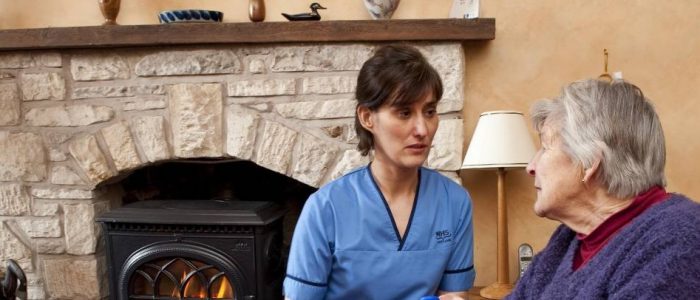Hospital Care at Home For Older People
Older people in Forth Valley who are acutely unwell may now be able to recover at home, rather than having to be admitted to hospital. Under the new service, known as Hospital at Home, Consultants will go out to see and assess patients in their own homes and arrange for them to be supported by a multidisciplinary team including advanced nurse practitioners, nurses, physiotherapists and medical staff.
Hospital at Home focuses primarily on people who are frail, older people with an acute illness. In the past they would have required to have been admitted to hospital with conditions such as chest infections and pulmonary embolisms but now, in many cases, they will be able to be treated in the comfort of their own home.
 NHS Forth Valley Clinical Director for Ageing and Health, Dr Claire Copeland, said: “For many patients, the prospect of being admitted to a hospital can be upsetting. It means separating them from the people, pets, and familiar surroundings that create a feeling of safety.
NHS Forth Valley Clinical Director for Ageing and Health, Dr Claire Copeland, said: “For many patients, the prospect of being admitted to a hospital can be upsetting. It means separating them from the people, pets, and familiar surroundings that create a feeling of safety.
“In addition, the effects on older people of remaining in hospital too long are well documented – often resulting in a loss of independence and self-esteem. That is why admission to hospital should only happen when the patient’s clinical need requires it. If the level of care and treatment can be provided at home then we would like to provide it there.”
After referral from a GP, a patient will be assessed, normally within a few hours, by a Hospital at Home practitioner who will take a history and conduct an initial examination. Following this a Consultant Geriatrician will assess the individual in their own home and discuss a care and treatment plan with input from the individual and their family.
Patients can also be referred for hospital investigations as though they were an inpatient and their case will be discussed daily at the multidisciplinary team meeting until they have been discharged back to their GP.
It is hoped to establish around 25 Hospital at Home ‘virtual beds’ across Forth Valley by the end of the year with the average length of stay four to six days for initial intensive support. Any further rehabilitation or home support would then be arranged, if required, depending on the person’s individual needs.





